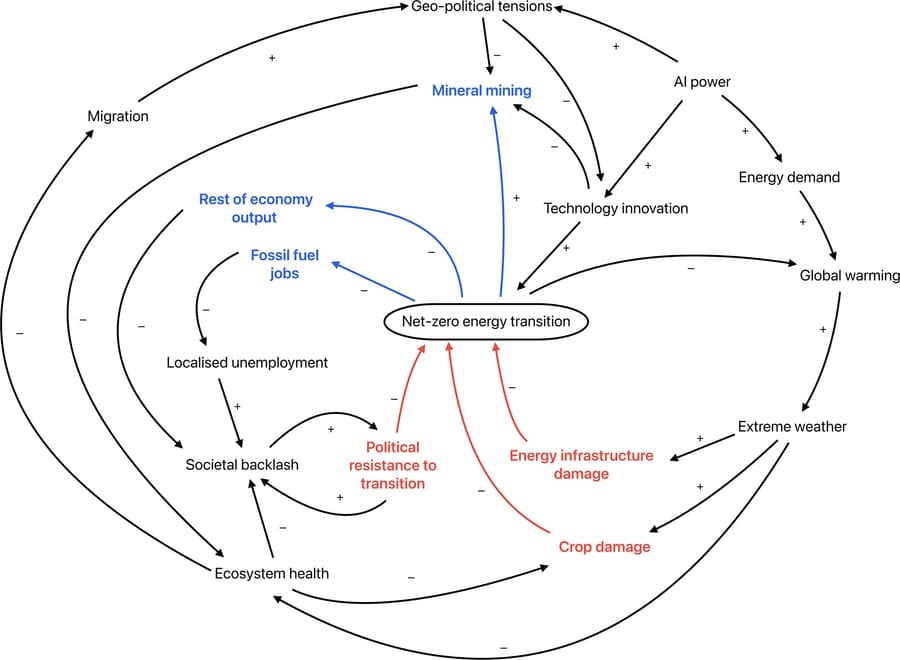Authors: Ashwin K. Seshadri, Ajay Gambhir, and Ramit Debnath
The world experienced its hottest year on record in 2024. 150 unprecedented climate disasters inflicted devastation across the globe. Transitioning to low-carbon energy has never been more urgent and critical in preserving a liveable planet. Accelerating global systemic risks, such as political division, AI and geopolitical tensions, drive as well as threaten these low-carbon energy transitions.
We find ourselves in a reinforcing feedback loop. Today’s polycrisis can undermine low-carbon transitions, and the breakdown of these transitions has the potential to intensify the polycrisis. Ashwin Seshadri, Centre for Atmospheric and Oceanic Sciences and ASRA Network Member, Ajay Gambhir, Director of Systemic Risk Assessment at ASRA, and Ramit Debnath, University of Cambridge, have published an article in Cambridge University Press on this topic.
Article snapshot
The urgent need to address accelerating global systemic risks impels low-carbon energy transitions, but these same risks also pose a threat. This briefing discusses factors influencing the stability and resilience of low-carbon energy transitions over extended time-frames, necessitating a multidisciplinary approach. The collapse of these transitions could exacerbate the polycrisis, making it crucial to identify and understand the systemic risks low-carbon transitions face.
Key questions addressed include: What are the systemic risks confronting low-carbon transitions? Given the unprecedented urgency and scale of required technological and institutional changes, how can low-carbon transitions mitigate, rather than amplify, global systemic risks?

A stylized systems map showing causal links between the net-zero transition and other systemic drivers. Note that a ‘+’ sign denotes a causal connection wherein if the first increases, so does the second; if the first decreases, so does the second. A ‘−’ sign denotes an inverse relationship: when the first factor increases, the second decreases; when the first factor decreases, the second increases. See a full explanation of this image in the article. (Source: authors).
The article describes the role of well-designed climate policies in fostering positive outcomes, achieving political consensus, integrating fiscal and social policies, and managing new risks such as those posed by climate engineering. It emphasizes the importance of long-term strategic planning, interdisciplinary research, and inclusive decision-making. Ultimately, successful low-carbon transitions can provide tools and methods to address broader global challenges, ensuring a sustainable and equitable future amidst a backdrop of complex global interdependencies.
Read the full article published online by Cambridge University Press in "Polycrisis in the Anthropocene."




